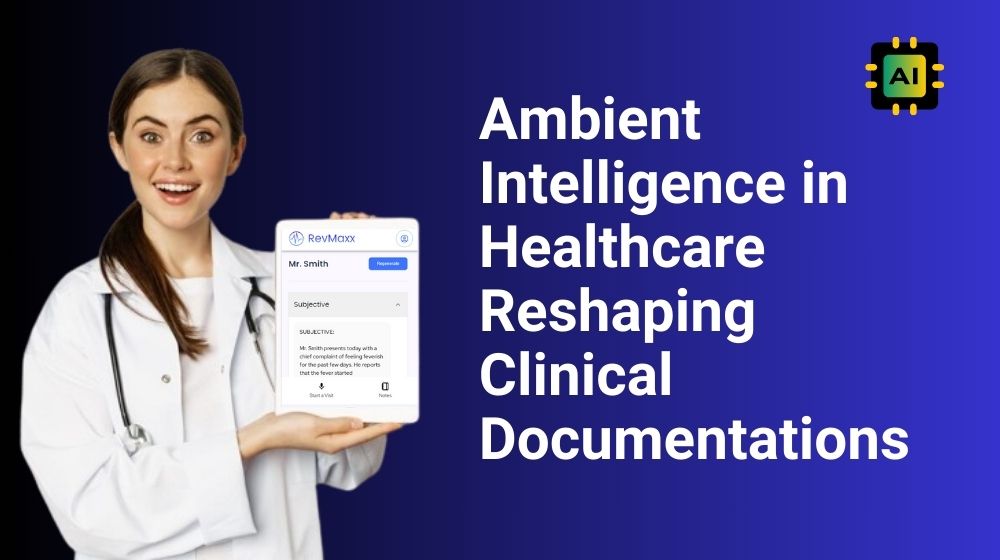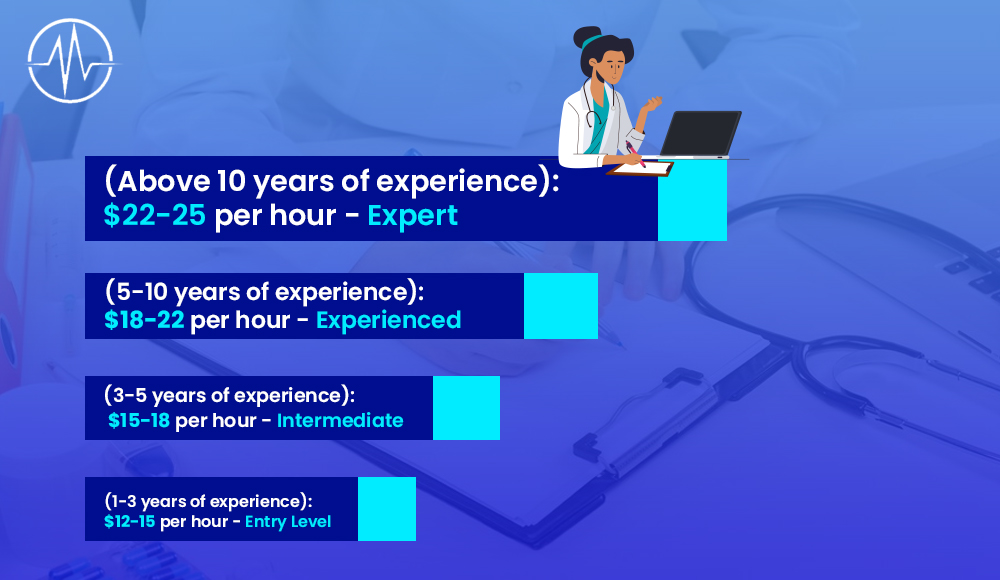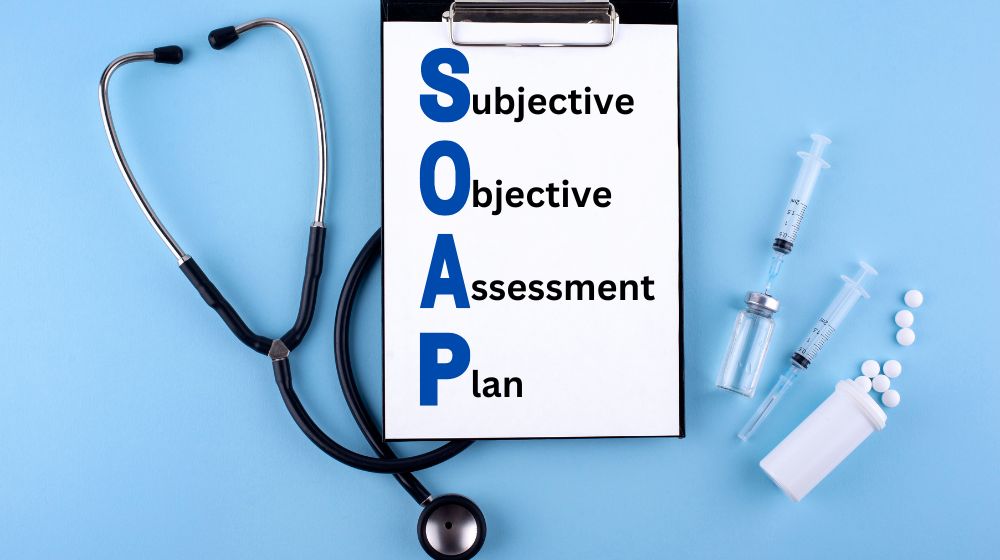Introduction
In the rapidly evolving landscape of healthcare technology, ambient intelligence in healthcare (AmI) is emerging as a transformative force, particularly in the realm of clinical documentation. This technology not only promises to enhance the efficiency of healthcare delivery but also to significantly alleviate the burdens traditionally associated with medical record-keeping.
What is Ambient Intelligence in Healthcare?
Ambient intelligence in healthcare refers to the integration of digital environments that are sensitive, adaptive, and responsive to the presence of people. This technology uses advanced sensors, devices, and data analytics to provide a seamless and intuitive support system for healthcare professionals. In clinical settings, AmI can anticipate the needs of staff and patients, thereby optimizing the way care is delivered and documented.
Exploring Ambient Intelligence in Clinical Documentation
The Challenges of Traditional Clinical Documentation
Traditional medical scribes indeed enable doctors to visit more patients in less time. Relatively, however, AI Scribes are proven to deliver faster turnout with ML solutions, than the latter performing at a faster rate than humans.
TechTarget’s study clearly shows the difference, stating that human medical scribes take no less than 24 hours, while AI medical scribes create clinical notes in minutes. From there, the physician can make any edits or changes before saving the note and locking it into the patient’s record.
Leaving accuracy and speed aside, if traditional scribes are not properly trained, understanding the intricacies of documentation becomes difficult, affecting appropriate record-keeping. This becomes an added burden to the physician, who has to ensure that the documentation and notes from each visit are appropriately entered every time.
The process of manually entering patient data into electronic health records (EHRs) is a laborious and error-prone task that is part of traditional clinical documentation. It can be detrimental to patient care for doctors to spend so much of their day in front of computer displays.
How can Ambient Intelligence Overcome the Challenges?
Ambient intelligence in healthcare addresses these issues by automating the data capture process and integrating it seamlessly into the clinical workflow. Through the use of sensors and voice recognition technology, AmI systems can unobtrusively collect and process information during patient interactions. This data is then intelligently incorporated into EHRs, reducing the manual burden on healthcare providers.
This automation promotes ambient clinical documentation but also ensures higher data accuracy and allows physicians to focus more on the patient rather than on paperwork. Moreover, ambient intelligence can prompt healthcare providers with reminders for patient follow-up care, ensuring that critical information is addressed and recorded.
Data accuracy is further enhanced with effortless integration with a physician’s EHR, thereby accessing the intricacy of electronic health information.
What is the Difference Between Ambient Intelligence and AI?
An article published by the National Center for Biotechnology Information (NCBI) differentiates Ambient intelligence in healthcare from AI by referring to the former as external spaces that are conscious of and reactive to human presence.
Therefore, creating human-centric smart environments that are sensitive, adaptive and responsive to human needs and emotions is what an ambient-assisted living system provides. The innovative interaction between the human and the surrounding environment makes ambient intelligence a suitable candidate for care.
Meanwhile, Artificial Intelligence in healthcare primarily refers to systems that can perform tasks that typically require human intelligence. These tasks include decision-making, speech recognition, and visual perception. AI is often used to analyze complex medical data, automate routine tasks, and support clinical decision-making.
Ambient Intelligence
Seamless Integration: AmI integrates smoothly into the existing clinical environment, enhancing user experience without disrupting workflows.
Context-Aware: It provides real-time, context-aware information, which is crucial for making informed clinical decisions.
Example: In a hospital room equipped with AMBIENT CLINICAL DOCUMENTATION, sensors can detect when a patient is trying to get out of bed and alert nursing staff to assist, thereby preventing falls.
Artificial Intelligence
Data Analysis: AI excels in analyzing large volumes of data quickly, which can be used for diagnostic support, treatment recommendations, and predictive analytics.
Automation of Routine Tasks: AI can automate routine tasks such as scheduling appointments or processing prescriptions, enhancing operational efficiency.
The Usage of Both Together
For an integrated approach, physicians opt for a collaborative solution of ambient and artificial intelligence. AmI application areas that employ AI technologies deliver more holistic computer-assisted medical transcription services. Ambient clinical documentation can therefore pose as the biggest informative link between patients/subjects and medical doctors/personnel through the implementation of special AI technologies like ASR and NLP methods. NLP in ML is important in assisting doctors with accurate medical transcription without compromising real-time interactions with patients.
Discussion on Advantages and Disadvantages of Ambient Intelligence in Healthcare
Advantages of Ambient AI
Enhanced Efficiency and Accuracy
The dramatic improvement in the efficiency and accuracy of clinical documentation is met by the implementation of voice recognition and natural language processing technologies. They transcribe clinical conversations directly into structured EHR entries, ensuring comprehensive and accurate documentation.
Improved Clinician-Patient Interaction
With AmI technologies, healthcare providers can maintain eye contact and engage more fully with patients during consultations, as the need to manually enter data into EHRs is significantly reduced.
Reduction in Clinician Burnout
Ambient clinical documentation addresses burnout head-on by streamlining documentation processes and reducing the time healthcare providers spend on paperwork. This reduction in administrative tasks allows clinicians to focus on the more rewarding aspects of their work, ultimately leading to lower levels of stress and burnout.
Disadvantages of Ambient AI
Implementation and Integration Challenges
Integrating AmI technologies with existing EHR systems can be complex and resource-intensive. Healthcare facilities must navigate the technical and logistical hurdles of deploying new hardware and software, ensuring compatibility and minimal disruption to existing workflows.
Privacy and Security Concerns
The continuous collection and processing of sensitive health information necessitate robust security measures to prevent unauthorized access and data breaches. Healthcare providers must ensure that AmI systems comply with HIPAA, adding another layer of complexity to their deployment and management.
Dependence on Technology
A potential risk of technology failures like system outages, software glitches, or hardware malfunctions can disrupt the documentation process, potentially affecting patient care.
Clinical Ambient Intelligence Addressing Physician Burnout
“ Less time staring at a screen. More time delivering patient care”:
This goal has been ambient intelligence in healthcare’s number one moto. With AI technology that automates clinician tasks at the front and back end of the healthcare setting, physician burnout has been mitigated by giant numbers.
How exactly did Ambient clinical documentation solve the problem?
- Addresses hospital staff shortage with a more efficient substitute
- Decreased documentation time and made physician schedules more efficient
- Customized according to the specialization of physician
- Supports seamless integration with EHR
- Reduces legal compliance by preventing medical coding errors
- Smoothens physician’s revenue cycle
The Specialty of Ambient Medical Scribes: An Example
Ambient clinical documentation solutions are preferred to traditional scribes for the simple reason that the former’s technology is so cutting-edge, it conducts documentation by filtering out all irrelevant words, customizes according to the physician’s needs, is available 24/7 for flexible scheduling of patient visits, and promises security of patient data all the while delivering 99% accuracy.
Let us take an emerging medical scribe in the market, RevMaxx AI to see how it solves the problem;
RevMaxx AI is powered by the collaborative use of ambient and artificial intelligence to record patient-doctor conversations and not only transcribe but also generate SOAP notes with medical codes in a template organized according to the specialization of the physician, individual preferences, and the physician’s style of writing.
RevMaxx AI avoids transcribing filler words. Uses ambient intelligence in healthcare, the software encounters small talk or other pleasantries and automatically cuts that away.
RevMaxx AI uses artificial intelligence technologies to enhance the solutions of Ambient clinical documentation to improve scalability, that is, improve the accuracy rate with more usage and time.
As Germain Farraher says about the nature of ambient medical scribes, “They get smarter and more accurate with time, which includes picking up on different clinicians’ note structure styles.”
Ambient intelligent scribes have leveraged ML customizing solutions to let the physician command over his notes without even writing them.
“The physician can dictate how they want the note to be formatted and structured.“.
The qualities that make ambient medical scribes worthwhile are not how accurately the technology interprets a physician’s structure of note-taking, but LETTING the physician’s command over their medical notes as per their wish, without having to stick with a single style or be restricted to technology rules.
Conclusion
To recap the discussion on how ambient artificial intelligence in healthcare delivers solutions to our physicians, we found out how AI harnesses advanced algorithms’ clinical documentation burden. That alone showcases the healthcare sector’s efforts to embrace clinical natural language processing to alleviate the burden of clinical documentation.
Moreover, it shows the promise of Ambient AI Scribes in transforming healthcare documentation practices by advancing existing solutions with one primary focus :
A future where AI scribes empower physicians to focus on patient care.









